No-Soil Gardening: Choosing the Growing Medium for Your Semi-Hydroponic System
There are many options available when considering no-soil gardening. You can either consider a full hydroponics system or instead go for a semi-hydroponic option, Much will depend on your circumstances and/or what you are looking to grow.
If you are choosing the semi-hydroponic option then of the most important decisions that you will make will be the growing medium to be used. The medium is where the plants’ roots will grow, so it must be sterile, absorbent, and have good drainage. There are many types of growing mediums available, so it is important to choose one that is best for your particular system.
Each type of medium has advantages and disadvantages and the choice that you make will weigh these up and see how the hydroponic system you are using and the needs of the type of plant that you are growing. It is more than likely you will use several mediums across different systems and needs.
We will look in detail at the properties that are required of a growing medium and assess how many of these are present in the most commonly used media used.
Differences Between NFT Hydroponic and Semi-Hydroponic Systems
Hydroponics is an innovative way to grow plants without soil, using nutrient-rich water instead. Two popular methods in this space are NFT (Nutrient Film Technique) hydroponic systems and semi-hydroponic systems. Understanding their differences can help you choose the best approach for your gardening needs.
NFT Hydroponic System
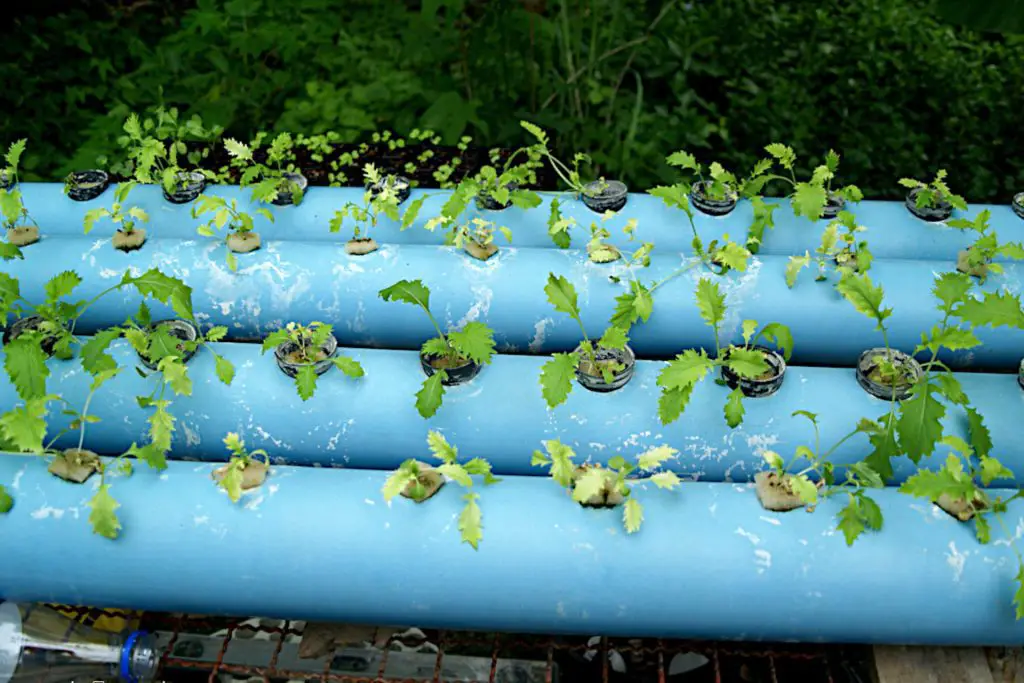
The NFT hydroponic system is renowned for its efficiency and simplicity. In this system, plants are grown in channels with a constant flow of nutrient solution. The roots are exposed to air, ensuring ample oxygen supply while the thin film of nutrients provides essential minerals.
- Structure and Design: NFT systems consist of sloped channels where the nutrient solution flows continuously. This setup is ideal for plants with smaller root systems, like lettuce or herbs.
- Water and Nutrient Management: The continuous flow of nutrients means plants receive a consistent supply, promoting rapid growth. However, this also requires a reliable pump and regular monitoring to prevent system failures.
- Advantages: The key benefits of NFT systems include efficient water use, rapid plant growth, and ease of setup and maintenance. They are particularly well-suited for commercial applications where space optimization and quick turnover are crucial.
- Considerations: The main drawbacks are the need for constant electricity to run the pump and the susceptibility of the system to blockages or failures, which can quickly affect plant health.
Semi-Hydroponic System
Semi-hydroponic systems, often used by hobbyists and small-scale growers, combine elements of traditional soil gardening with hydroponics. These systems typically involve growing plants in an inert medium, such as clay pellets, with periodic watering of a nutrient solution.
- Structure and Design: Semi-hydroponic setups use containers filled with a medium that supports plant roots while allowing easy drainage. The nutrient solution is delivered intermittently, either manually or through a timed system.
- Water and Nutrient Management: Unlike the constant flow in NFT systems, semi-hydroponic systems rely on cycles of wet and dry periods. This mimics natural soil conditions, allowing roots to access oxygen during the dry phase.
- Advantages: These systems are less dependent on continuous electricity, making them more resilient to power outages. They also provide a buffer against system failures since the medium retains moisture and nutrients.
- Considerations: Semi-hydroponic systems may require more frequent manual intervention and careful management of the watering schedule to avoid over- or under-watering. They are typically less efficient in terms of water and nutrient use compared to NFT systems.
Factors that Influence Your Choice of Semi-Hydroponics Growing Medium
There are so many different factors that will affect your choice of growing medium, and your choice will depend on the plants that you want to cultivate, as well as the design, size, and placement of your hydroponic system, which will all have an impact on the medium that you choose.
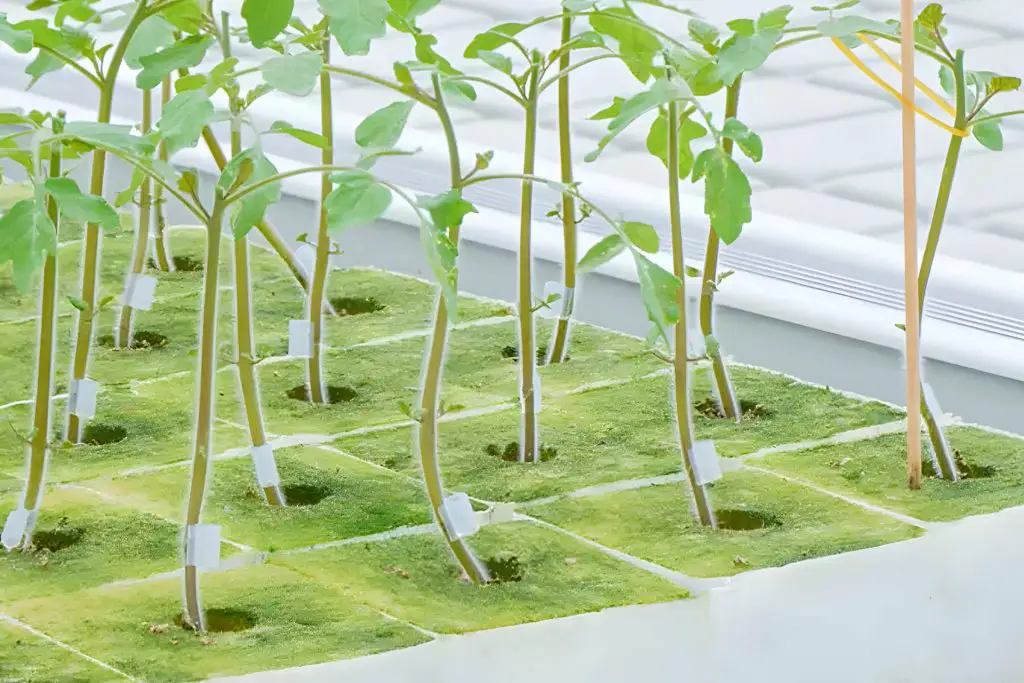
As you consider the many alternative growing mediums there are several things that you need to have at the front of your mind to ensure you make the best choice.
The first aspects to consider are physical aspects:
- Is it simple to handle and prepare in the pot?
- Is it within your means, and can you get it where you live?
- If it is used for germination, does it create a good contact between the seed and the medium?
- Will it provide plants that are developing any degree of physical stability?
- What capacity does it have to insulate a plant’s roots to shield it from possible temperature variations?
- Is it devoid and resistant to pathogens and pests that may prevent germination, slow development, or spread disease?
- Does its physical appearance coincide with any visual effect you are trying to achieve?
Beyond these basic questions about the physical nature of the medium, you also have to consider the plant and its needs and the hydroponic system that you are employing, and whether the medium has the capacity to meet these needs.
Water Holding Capacity (WHC)
Another important factor that needs to be taken into account is the growing medium’s water retention capacity. The importance of its ability to retain water will depend on the type of hydroponic system being used. Therefore the way a system will store water in between cycles of irrigation will impact on the medium’s capacity for holding water.
Aeration Propensity
The air-filled porosity (AFP) of a medium also needs to be assessed. This refers to the proportion of the grow medium’s gaps available that are not currently submerged by water/nutrient solution at any given moment in time. The medium shouldn’t inhibit aeration, with there needing to be a decent level of aeration going to the plant roots.
Nutrient Delivery
How the growing medium you choose affects the nutrient delivery can also have an impact. This is determined by the level of its cation exchange capacity. This is the ability of a growing medium to deliver nutritional cations to the soil solution for plant uptake. The plant nutrition cations potassium (K+), magnesium (Mg2+), and calcium (Ca2+) should be absorbed into the medium through the cation exchange process. This means that the growing medium needs an equivalent amount of negative charges present for the process to be at its most efficient.[1] The vast majority of the micronutrients and even some of the macronutrients included in fertilizer have a positive charge of +1 or +2.
Pest Control
If you are looking to avoid using pesticides and instead want to use an organic defense or integrated pest management methods then this will also impact your choice of growing medium. While not necessarily the easiest to implement in home garden environments, if you want to follow this path you should try to use natural organic media. This can be a medium such as coco coir that can be infected with bacteria that are helpful to the IPM process.
Ability to be recycled?
A further consideration is the ability to recycle or reuse the medium again. This will depend on a number of factors from the amount the material degrades to the ease with which it can be washed and sterilized to avoid any possible pathogen or disease transfer.
How effective and efficient the growing medium that you choose will be will largely depend on all of these traits and attributes. Before you begin scaling up your operations, you should make it a priority to conduct tests using a variety of media in order to identify the approach that will provide the most satisfactory results for your expanding requirements. Various crops may do well in a variety of different environments, circumstances, and media arrangements.
Common Semi Hydroponic growing Mediums
Almost any material that fits the criteria that we have discussed above can be used as a growing medium, including the absence of one altogether (aeroponics). There are however a number of mediums that have become commonly used in hydroponic systems.
Expanded Clay Pellets or LECA

LECA is an abbreviation for lightweight expanded clay aggregate, often known as hydroton stones or clay pebbles. They are balls/pebbles that range in size from 0.3′′ to 0.6′′ and are formed of porous clay that has been fired. They are used in hydroponics and in combination with, or as an alternative to, growth media like as soil or potting mix.
They are an inorganic substance that is clean, can be reused, and are good to the environment. Additionally, they have a pleasant appearance. Because they are used as a growth medium, they make it possible to cultivate plants without the need to worry about watering them and also assist avoid overwatering.
Rockwool as a Hydroponics Growing Medium?
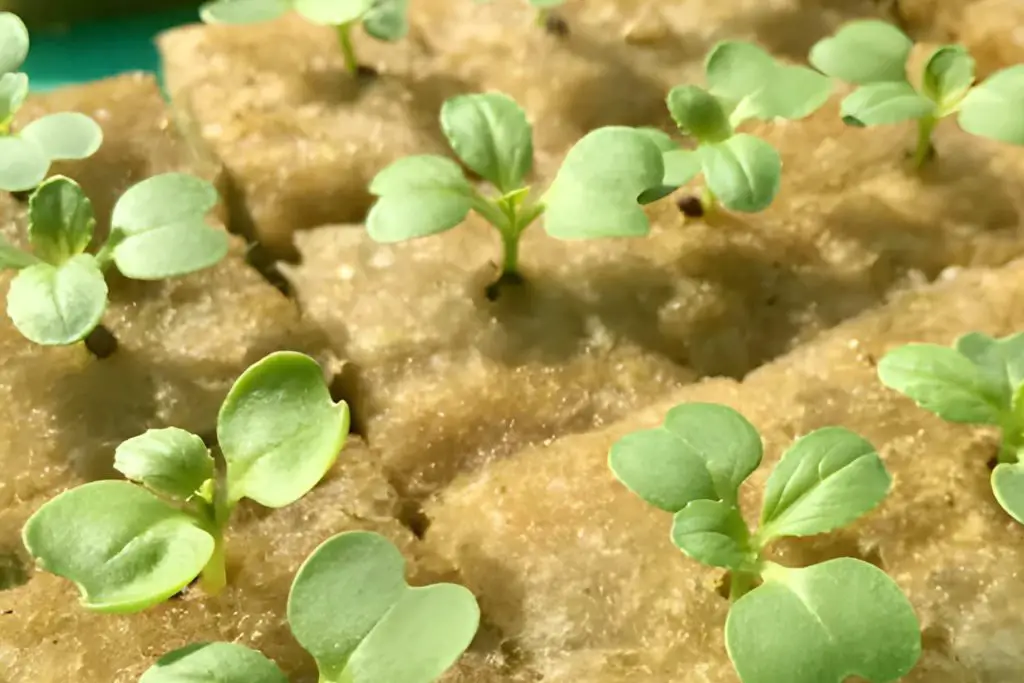
Also known as rock wool, this product is composed of a fine fiber that is woven into a matrix of glass fibers. It comes in various sizes and has several uses, including hydroponics, horticulture, and aquaculture. It can be used on its own or as part of a soilless mix. It retains moisture well, does not float in water, and does not have cation exchange capacity (so it provides no buffering), but it can be easily saturated with water if the top layer is removed from the container. Rockwool has excellent aeration properties for rooting plants; however, it may still retain too much water to use for ebb-and-flow systems.
If washed and sterilized Rockwool can be reused. However, it is not biodegradable and when it comes to the end of its life there are environmental implications as it normally ends up in a landfill.
Coconut Coir
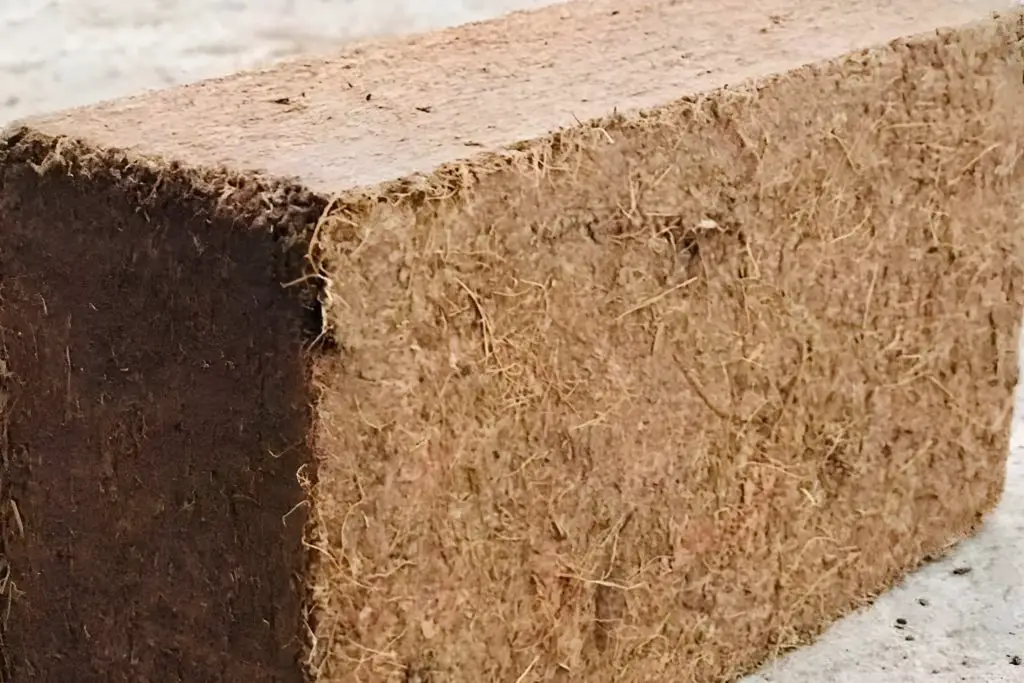
Coconut coir is an inert material and is made from the husk-coir, the husks of coconuts. Coconut coir is processed and can be left as long fiber or more usually ground down into a granular form and compressed into cubes or bricks that are expanded using water and broken up for use at which point it has a resemblance to soil.
As a material, moisture-rich material with high porosity and good water retention abilities. It absorbs water quickly and can hold up to four times its weight in water, making it an excellent growing medium for hydroponic systems. Coconut coir also provides aeration to the roots. It is often used as an alternative to peat moss as it has many of its properties.
However, it can be expensive because the pellets must be hand-bagged and then cut into small sizes before loading them onto trucks or barges for transport. Its quality depends on how the coir is flushed; how it is cleaned, soaked, and dried.
Coco coir can be used in a number of different ways but it can also be mixed with other growing mediums such as perlite (generally 70- 30%) to help with drainage as sometimes there can be too much water retention in the coir.
Coco Coil can come in various different forms from coco peat (ground down husks), coco fiber and coco chips (often used as a mulch)
Perlite
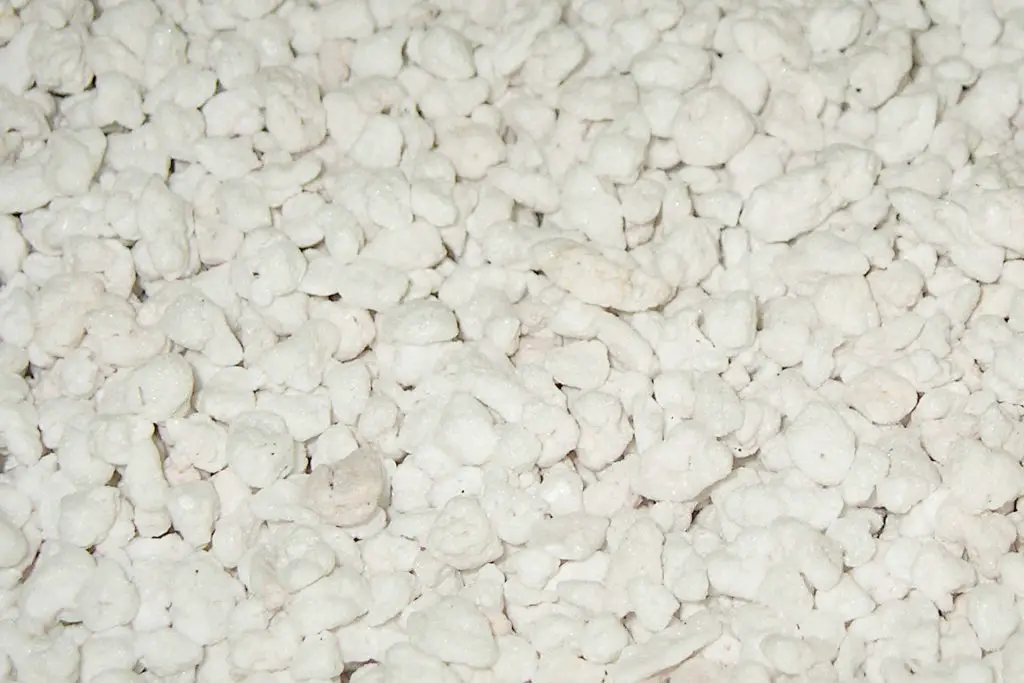
A lightweight, permeable, and porous volcanic rock that is the main ingredient in a number of concrete products. Perlite has been used as an alternative growing medium for many years by commercial growers. It is extremely porous and allows water to penetrate easily, which can lead to problems with algae buildup on the surface of your pots.
As such it is good for its aeration capabilities but is unable to perform cation exchange. Although it can absorb water it is unable to retain it and can therefore dry out between waterings.
Vermiculite
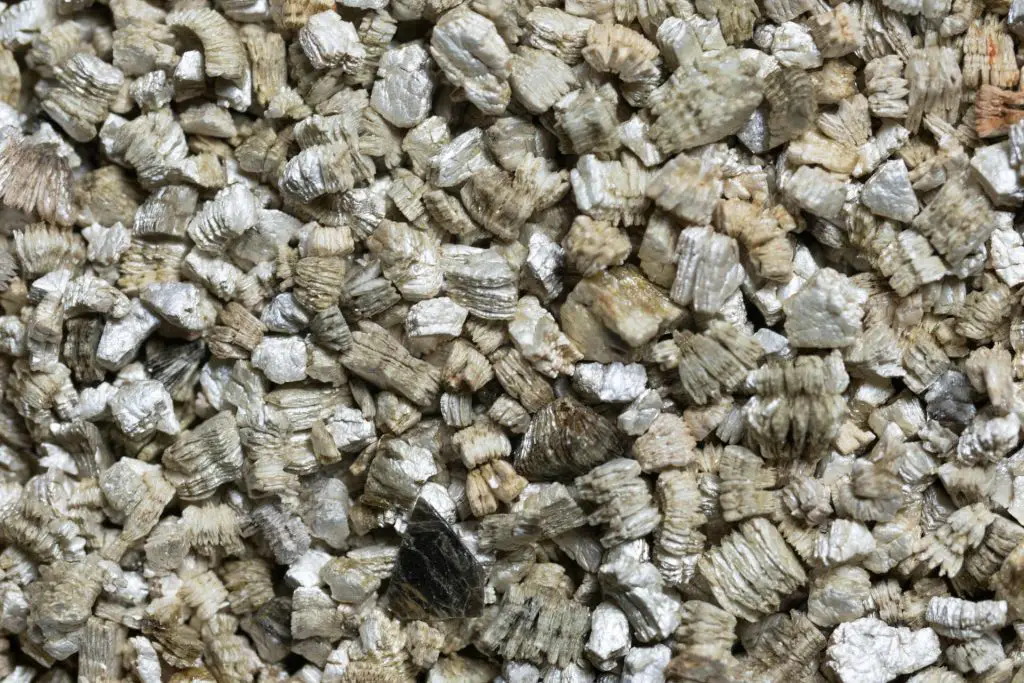
Vermiculite is a mineral and is similar in nature to perlite, however, it is better at retaining water and can be used in hydroponic systems. It is lightweight – works well as an open-top reservoir or as the medium for a drip system (as opposed to growing on soil) and can prevent pests and bacterial fungi.
The downside is that it’s a fairly rare material and as such expensive in comparison to some other products, but still cheaper than Rockwool, which has similar benefits
When used in hydroponics it can be combined with perlite in order to prevent the growing medium from becoming excessively saturated with water. Better aeration and drainage result from this. Because it can retain more water than perlite, vermiculite is often utilized on its own in regions with higher average temperatures.
Oasis Cubes
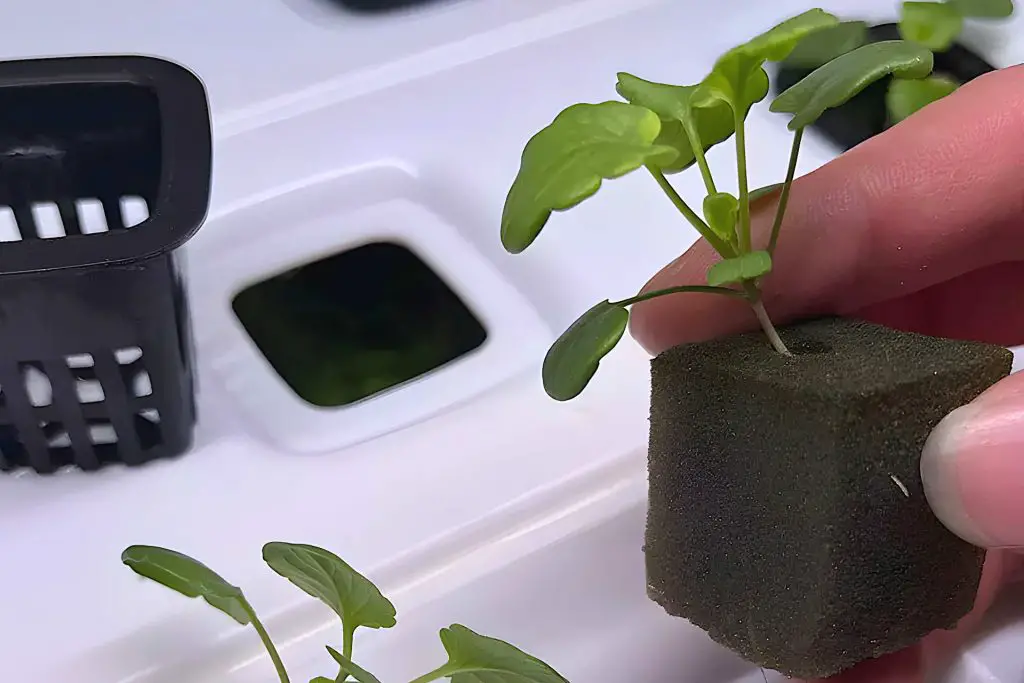
Oasis cubes are a great alternative to Rockwool. They’re also made from natural fibrous materials such as cotton and wood pulp and are available in various sizes.
The Oasis cube’s interlocking design provides a stable platform for roots to grow on. It is an excellent choice for hydroponics because it is lightweight, yet durable; its porous structure allows water and air to penetrate easily, and it will not retain any smell or contaminate the medium with harmful chemicals or microorganisms that can destroy plants.
One disadvantage is that you should use oasis cubes within 2-3 months after purchase because they become compacted when wetted and will break apart over time if you don’t use them often.
Starter Plugs
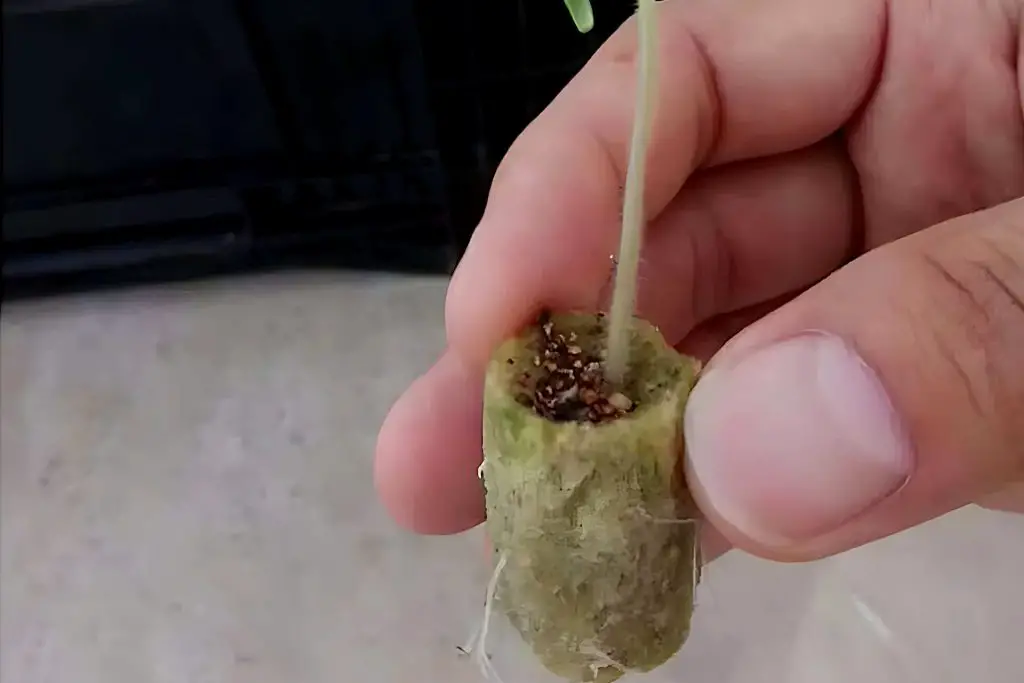
Starter plugs are growing medium plugs specifically designed for hydroponic system use. They come in various shapes and sizes to accommodate different hydroponic systems, they are lightweight and easy to transport, making them the perfect choice for beginning growers.
The growing medium plugs allow roots plenty of space to grow unrestricted as well as the ability to absorb water quickly which can prevent root rot and other moisture-related problems. Another benefit of starter plugs is the fact that they retain water, meaning you can water them less frequently and still achieve successful hydroponic growth.
While a relatively sustainable solution they are only useful when looking to grow from seed. An additional problem is that they can attract pests such as gnats.
Growstones

It can be a title to describe various forms of growing mediums but here we are talking about those made from recycled glass. Glass growstones are a popular choice for hydroponics growing systems because, similar to LECA, they provide good drainage and aeration, which is essential to controlling moisture and airflow. They come in a variety of sizes and colors, so you can customize your system to match the rest of your plants or decor.
Growstones are used as a bottom layer in flood and drain systems, but they also make an excellent top layer for drip or mist systems. Their ability to draw up water in a capillary action makes them ideal for wick systems
Using Rice Hulls
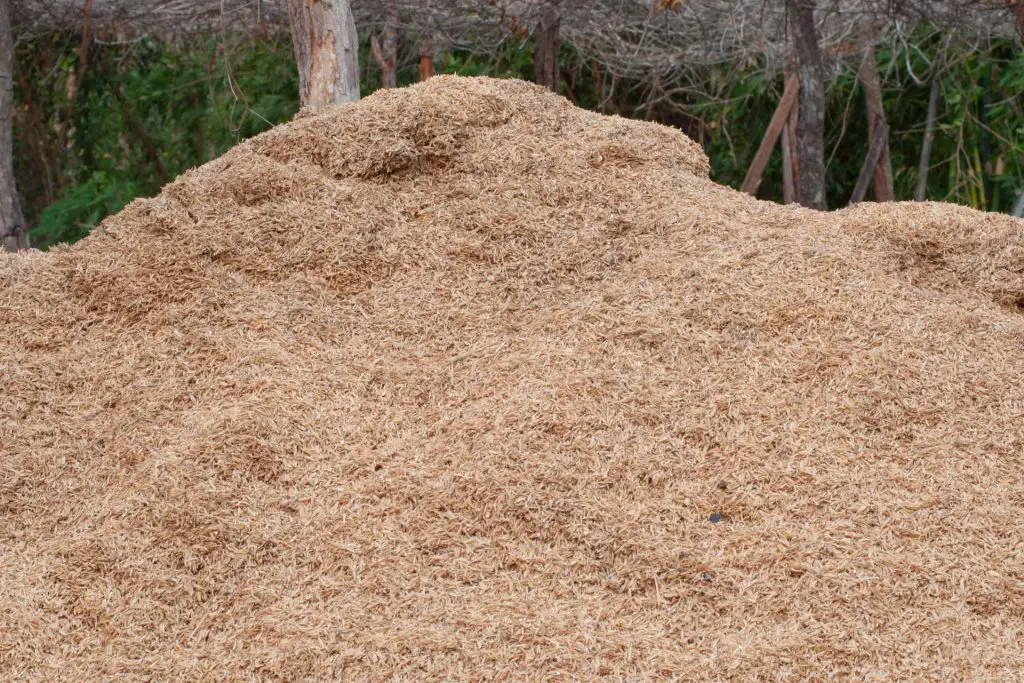
Rice hulls are the cleaned husks from rice. They’re a great medium for starting seedlings because they contain some phosphorus, which is good for establishing root structure and strength). In addition, they can perform the function of a filter by collecting dirt and particles that are suspended in the water. This makes it easier to maintain a clean water supply and lowers the risk of the hydroponic system becoming clogged.
Besides its filtration properties, there are several other benefits to using rice hulls. These include a good air-to-water ratio, are sustainable, and also are inexpensive.
The downside of rice hulls is that they are not very absorbent and will tend to retain some moisture (although this can be an advantage if you’re growing in a humid environment). They also decay and cannot be reused, although they can be composted.
Gravel
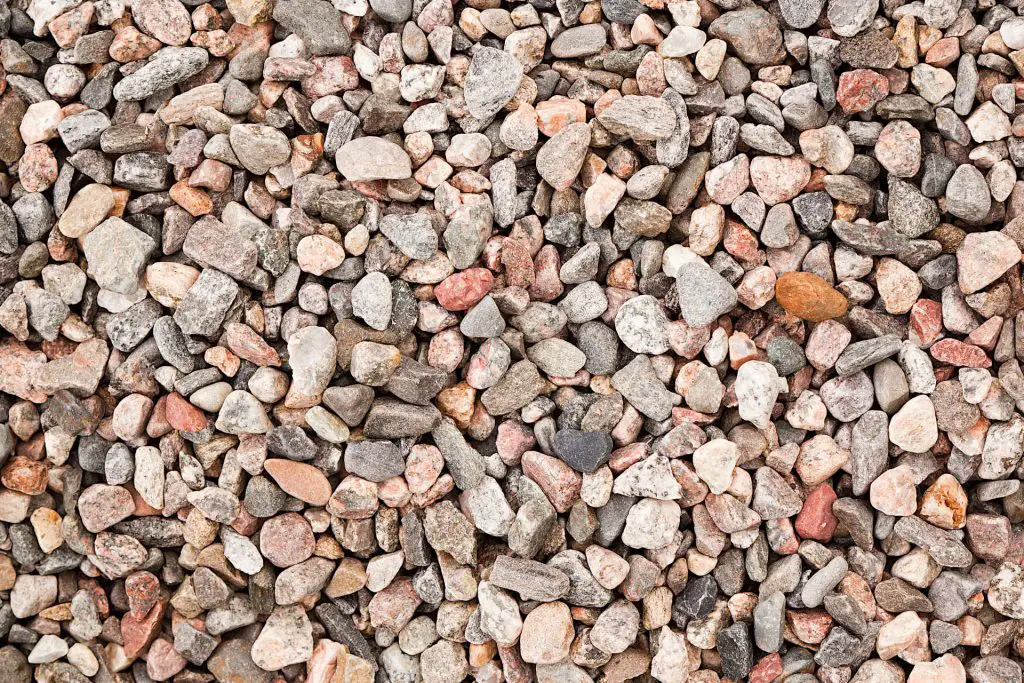
Gravel is one of the most popular growing mediums for hydroponics. It is inexpensive and easy to find. The main disadvantage of gravel as a growing medium is that it does not hold nutrients very well and needs frequent watering to prevent nutrient loss.
Gravel should be rinsed thoroughly before use and kept in a sealed container to prevent algae growth. It also can harbor bacteria if left wet too long after it has been washed. However, washing with bleach or other disinfectants should kill off any pathogens in the gravel.
The fact that it has no water retention capabilities means that it is not appropriate for use in hydroponic systems that need the growing medium to keep moisture for the roots. It can though be mixed with other mediums such as coconut coir or Rockwool which will provide these capabilities.
Wood Fiber/ Sawdust
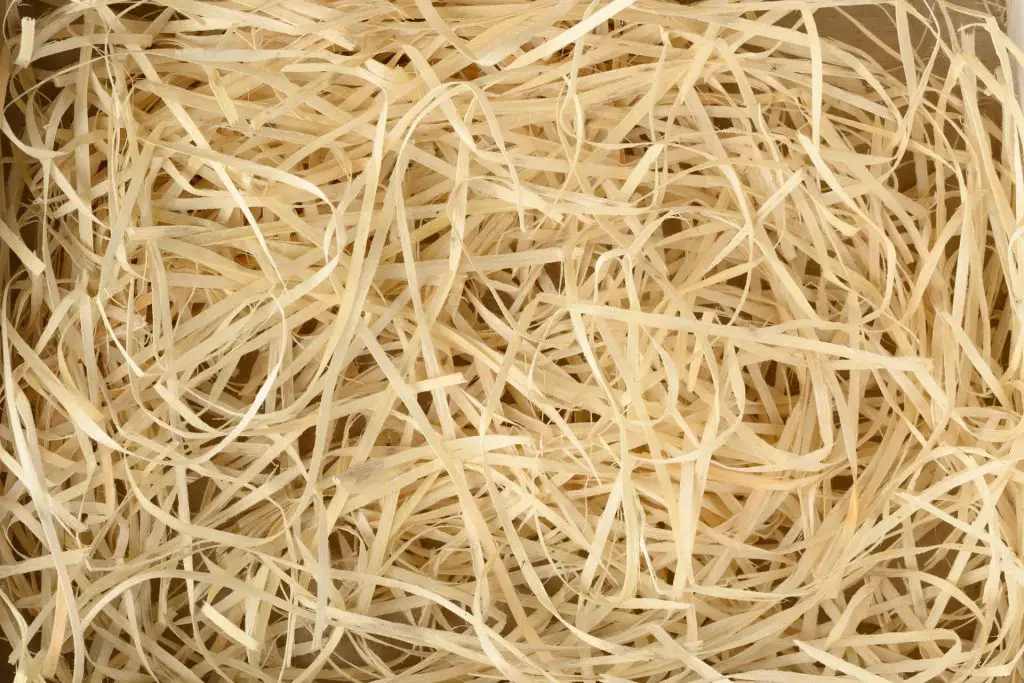
Sawdust is made from sawdust and wood chips. It is available in a range of sizes, but the finer chips are more expensive. This material can be used to start seeds or to provide aeration in the root zone; it also makes a good growing medium for plants requiring extra water retention such as tropicals.
In order to use wood fiber correctly, you will need to presoak it in some form of pH buffering solution prior to adding it into your system. Sawdust should not be added to an already established hydroponic system, as it can cause problems with nutrient absorption.
Using Sand
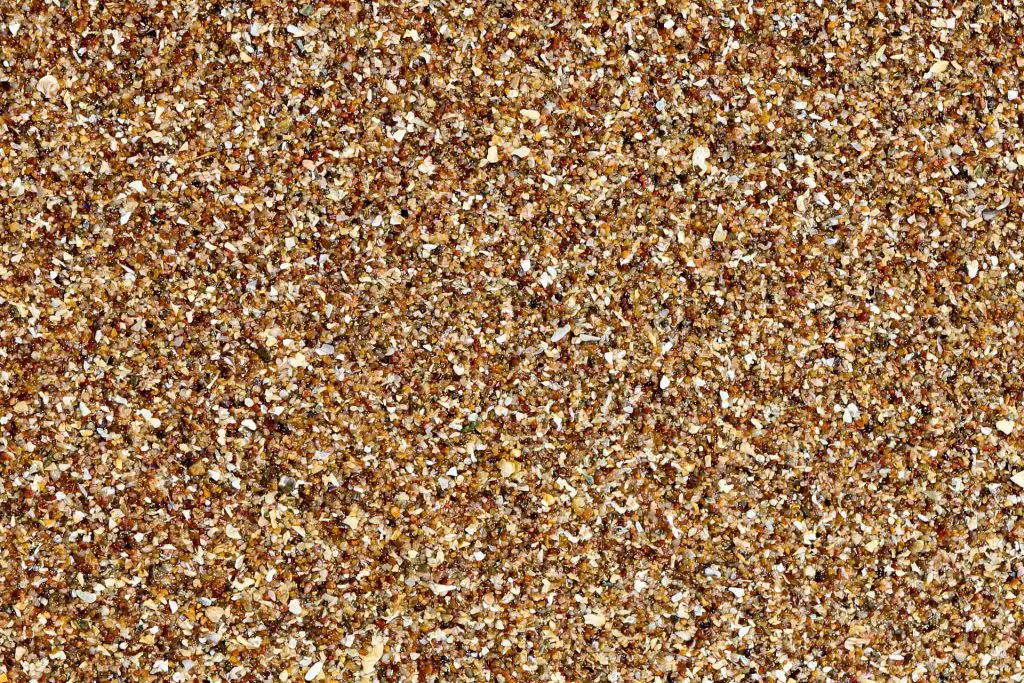
Sand is the most commonly used growing medium in hydroponics, and has been since the very beginning of the use of hydroponics as a growing method.
Sand can be purchased as coarse or fine-grained material, with varying degrees of particle size, although you should use a particle size of at least 2mm. It is used in hydroponics because provides good drainage and supplies decent aeration.
On the downside, sand is a heavy material that needs to be sterilized regularly. You should also look to be aware of sand with limestone content as this can alter the pH balance of your nutrient solution, making it more alkaline.
Coarse sand is often mixed with other materials such as vermiculite or perlite to make a starter medium for new seedlings.
Other Growing Mediums
We have covered the most popular forms of growing mediums. There are many others such as phenolic foam, pumice, hemp fiber, and brick shards to name but a few. In truth, the list itself is almost endless and if the material that you want to use is able to provide a number of the properties and capabilities listed earlier then it is likely it can be used.
Choosing Your Semi-Hydroponics Growing Medium
There are many factors to consider when choosing the best growing medium for your hydroponic system. You should weigh each medium’s benefits and drawbacks before deciding.
Prior to beginning to scale up your operations, make it a point to run testing utilizing a number of different media to determine the strategy that will deliver the most suitable outcomes for your increasing needs. It is likely that different crops may thrive in diverse settings, conditions, and media setups.
Notes:
- The University of Georgia: Cation Exchange Capacity and Base Saturation
